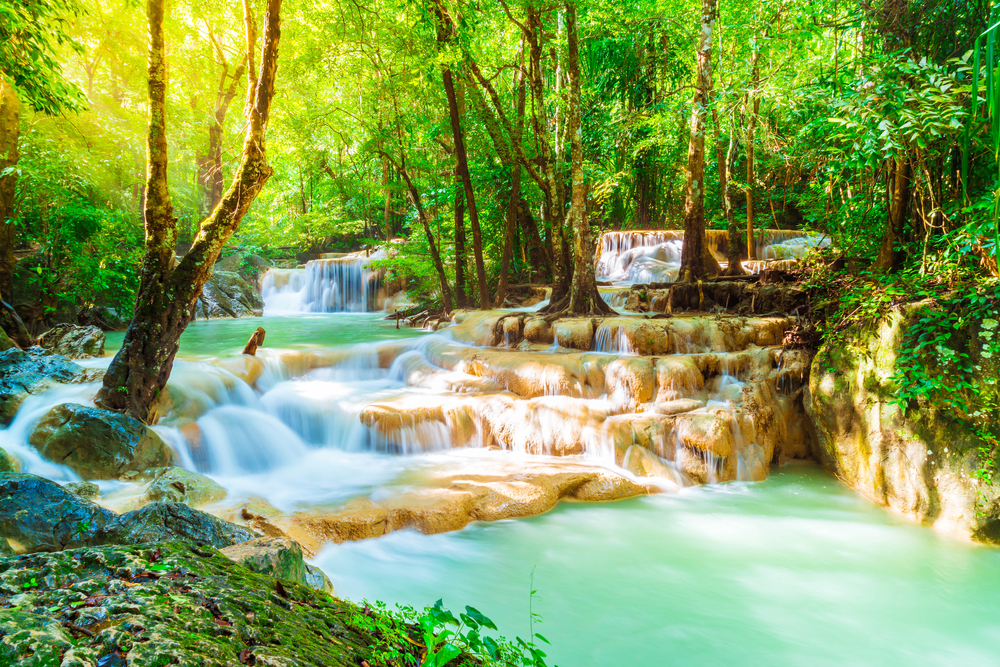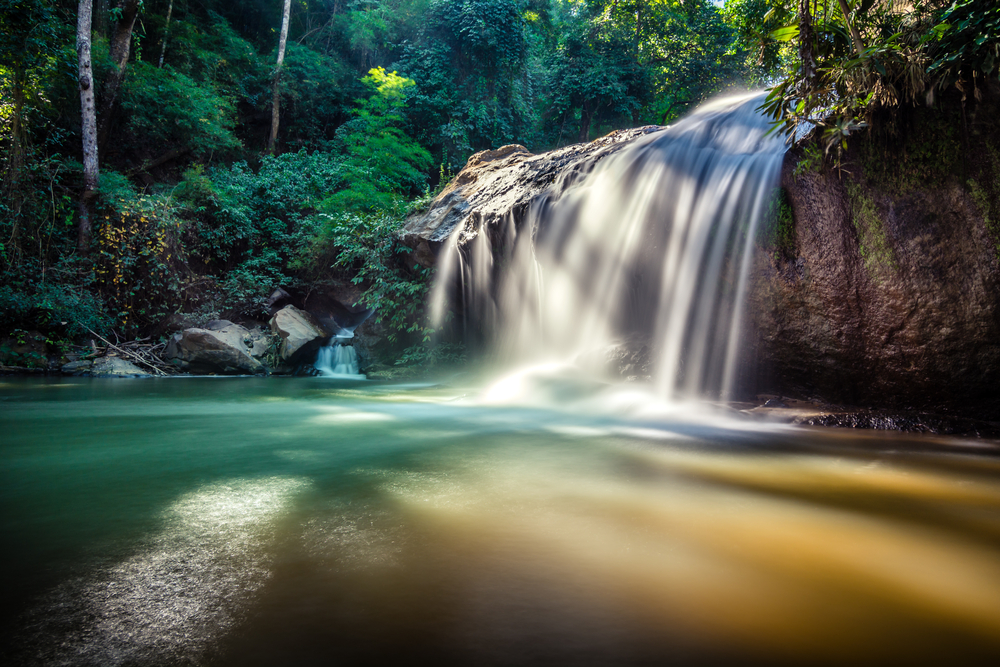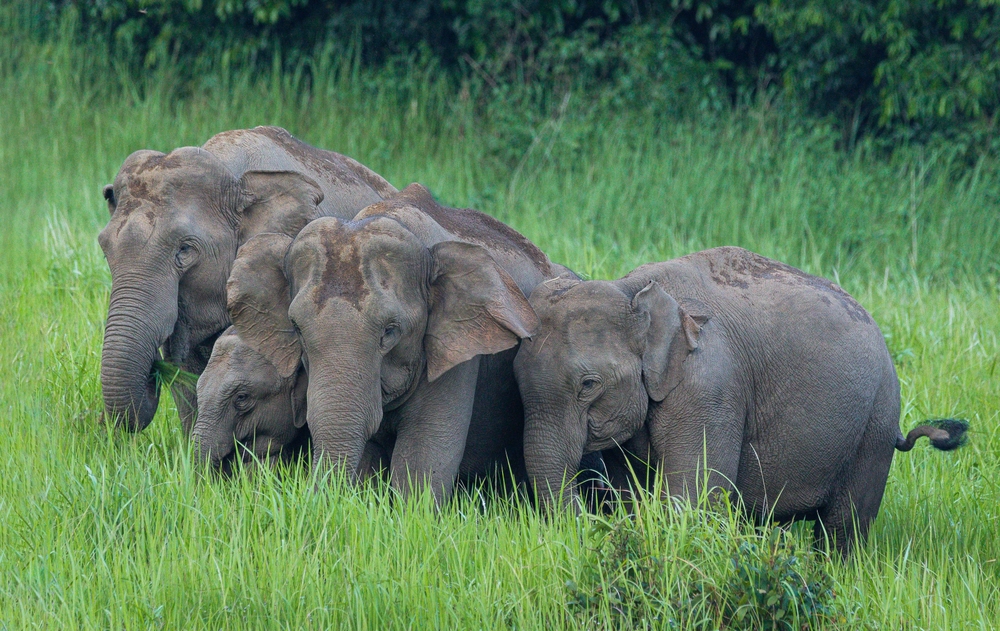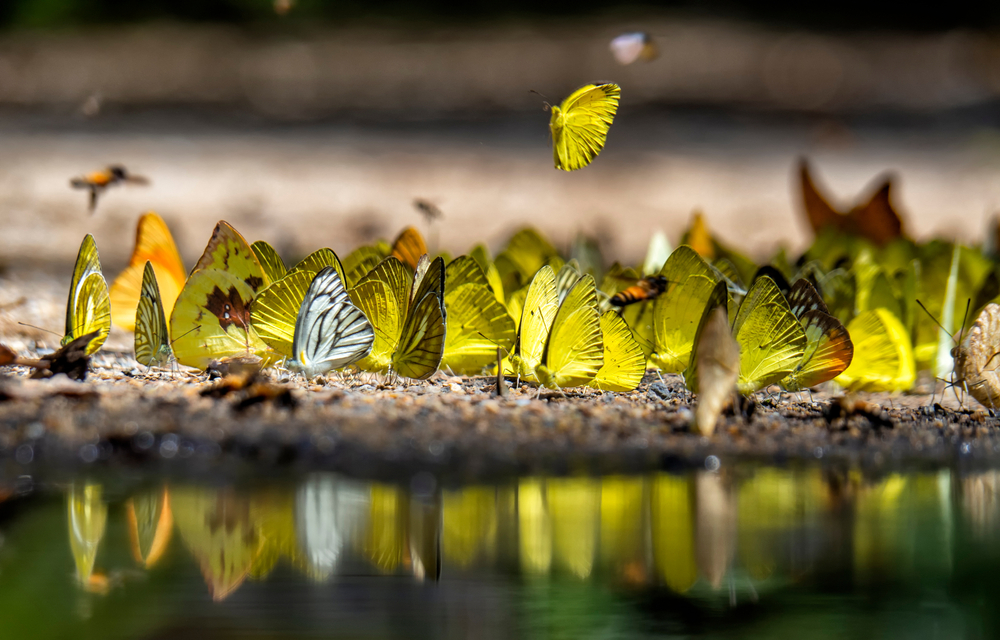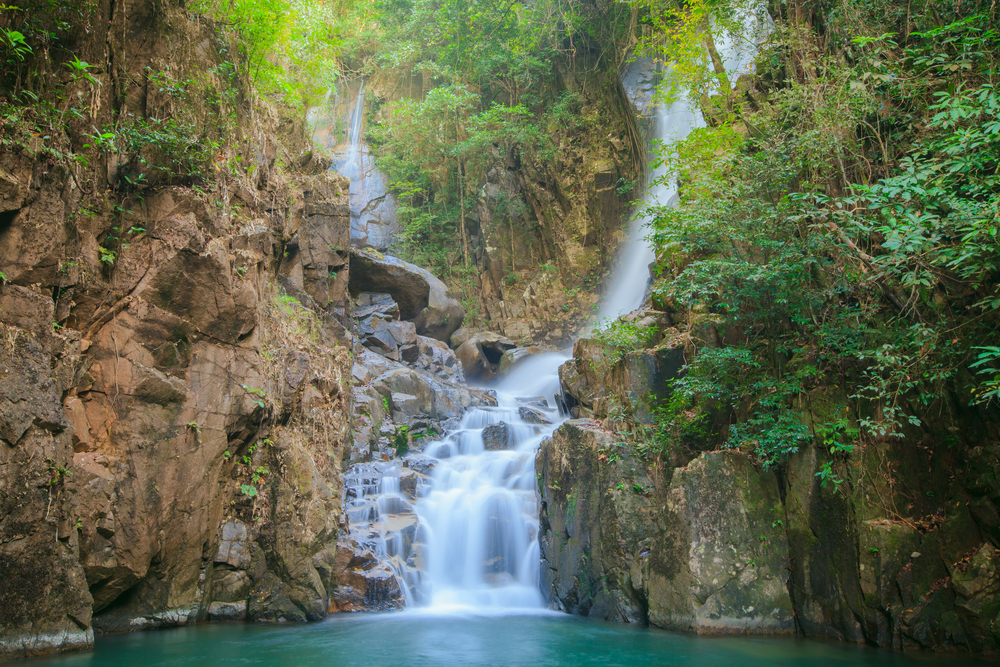Pha Taem Overview
Pha Taem National Park (อุทยานแห่งชาติผาแต้ม) is a strikingly beautiful natural reserve located in the Ubon Ratchathani Province in northeastern Thailand, near the border with Laos. Covering an area of approximately 131 square miles (339 square kilometers), this park is known for its dramatic cliffs, ancient rock paintings, and diverse landscapes.
Its name, “Pha Taem,” translates to “painted cliff,” reflecting its most famous feature: prehistoric rock art that provides a glimpse into the lives of early inhabitants thousands of years ago. The park’s terrain is dominated by sandstone plateaus, cliffs, and unique rock formations, offering breathtaking views of the Mekong River, especially at sunrise, a scene for which the park is renowned.
The landscapes of Pha Taem National Park are characterized by a mix of dry dipterocarp forests, deciduous forests, and patches of lush green vegetation. Visitors will encounter fascinating geological formations such as Sao Chaliang, mushroom-shaped rock pillars formed by centuries of erosion.
The cliffs along the Mekong River showcase the stark beauty of sandstone ridges and escarpments. Notable within the park are the ancient rock paintings that span over 180 meters, depicting scenes of daily life, wildlife, and human figures. These paintings, estimated to be over 3,000 years old, are a highlight for archaeologists and history enthusiasts alike.
Wildlife in Pha Taem National Park is diverse, although spotting animals can sometimes be challenging due to the thick vegetation and elusive nature of many species. Mammals such as wild boars, civets, and barking deer inhabit the park. Birdwatchers can enjoy sightings of colorful species, including kingfishers, eagles, and hornbills, adding vibrant life to the park’s serene atmosphere. The biodiversity here extends to reptiles and amphibians, with various lizards and frogs thriving in the region’s warm climate.
Pha Taem is a favorite among both local and international visitors for its unique combination of natural and cultural attractions. The rock art and geological features, such as the Sao Chaliang rock pillars, attract visitors eager to explore the area’s historical and geological significance. For panoramic views, the Pha Chanadai viewpoint offers one of the most stunning sunrise experiences over the Mekong River. Trails through the park invite exploration, with opportunities to marvel at the unique flora and fauna, as well as the natural tranquility of the region.
Visitors engage with Pha Taem National Park through activities like hiking, photography, and birdwatching. The park is accessible via well-maintained paths that guide explorers to key features, including the rock paintings and scenic viewpoints. Camping facilities allow nature lovers to stay overnight and fully immerse themselves in the beauty and serenity of the environment.
Conservation efforts in Pha Taem National Park focus on preserving its archaeological treasures and maintaining its delicate ecosystems. Challenges include managing human impact, addressing deforestation in surrounding areas, and protecting wildlife from habitat loss. Despite these challenges, the park has successfully maintained its cultural and natural heritage, offering a sustainable model for the integration of tourism and conservation.












































































